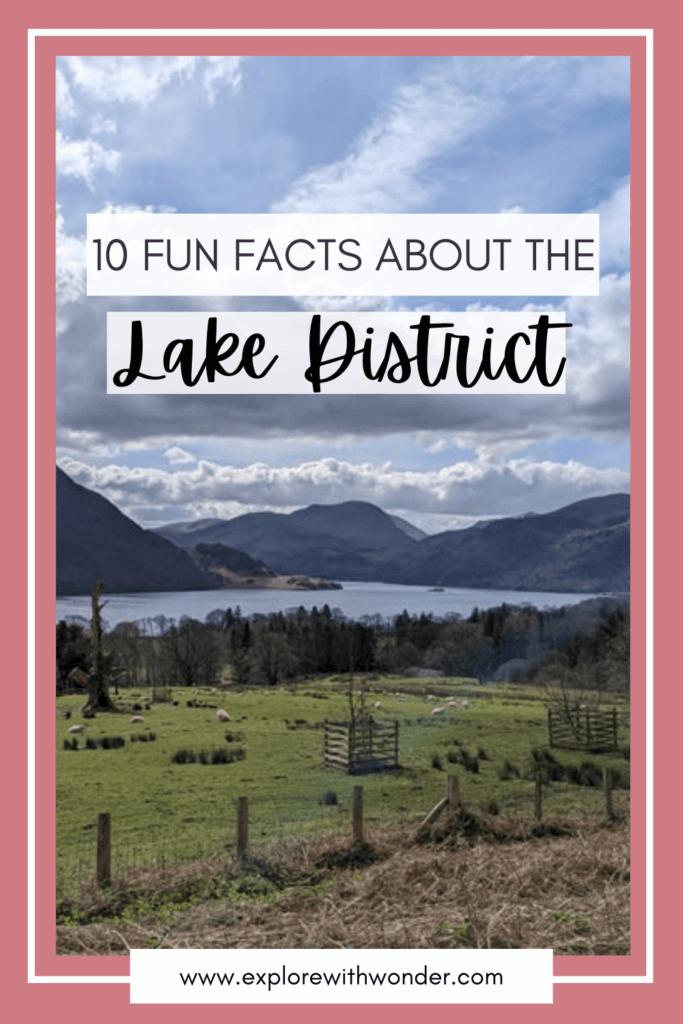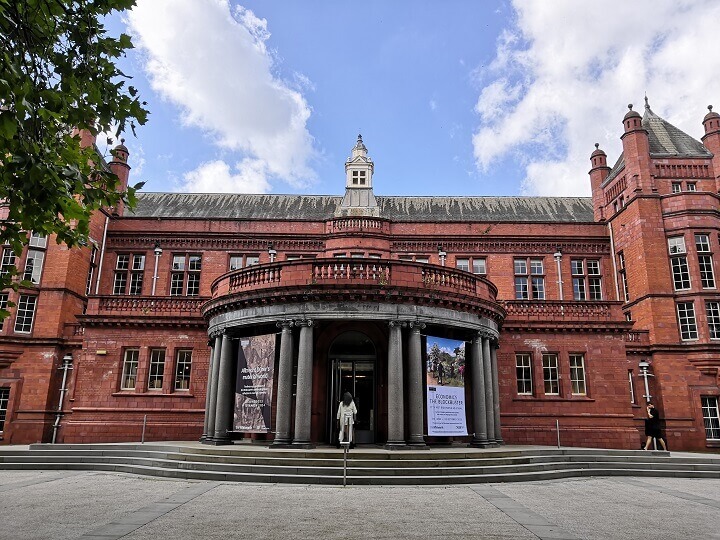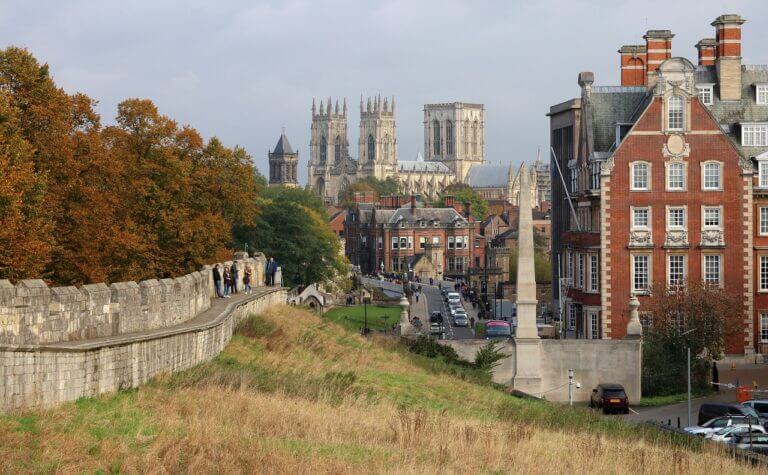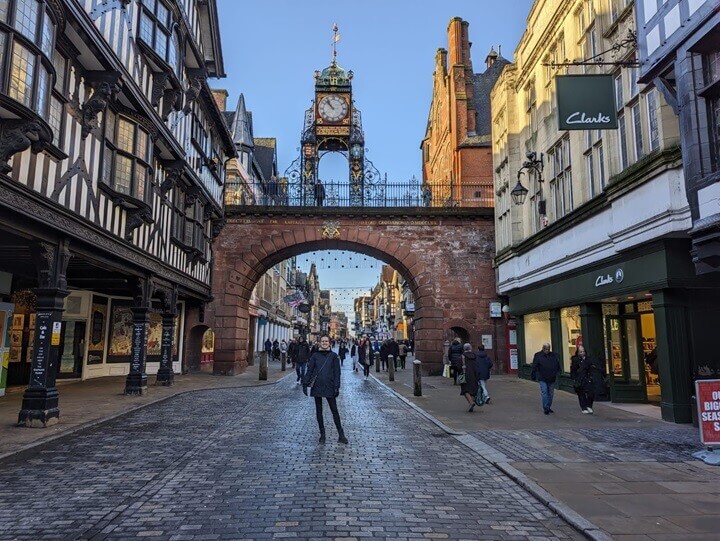10 Facts About the Lake District You Need to Know
Discover 10 fascinating facts about the Lake District, one of the most scenic areas in England.
Renowned for its dramatic scenery, the Lake District is a beloved holiday destination, particularly for those who enjoy the outdoors. The national park serves as a haven for walkers, cyclists, rock climbers, kayakers, and other adventure enthusiasts.
Since I started living in Manchester, I’ve been fortunate to visit this national park several times. There is so much to see and do there that you can discover something new every time you visit.
For this article, I’ve selected my favourite facts about the Lake District, from its natural wonders to its culinary specialties. I hope it inspires you to view this part of the UK in a new light.
Disclosure: Some of the links below are affiliate links, which means that at no additional cost to you, I may earn a small commission if you click through and make a purchase. Please note, I only recommend products and services that I know and love. Read full Privacy Policy here.
10 Interesting Facts About the Lake District
Narrowing down the list of the most fascinating facts about the Lake District to just 10 wasn’t easy, given the area’s rich offerings. I’ve aimed to cover various aspects of the Lakeland experience, from its natural beauty and cultural significance to its vibrant foodie scene.
It’s Home to England’s Deepest Lake
The Lake District is home to Wastwater, the deepest lake in England at 79 metres. It is situated in the Wasdale Valley in the western part of the national park.
Wastwater has a more remote feel compared to some other areas of the Lake District and is framed by dramatic fells. It is considered one of the most scenic spots in the park, and the south-western end of the lake was voted Britain’s Favourite View on ITV in 2007.
Wastwater and its surrounding area are popular destinations for hikers, cyclists, climbers, and even divers. The area is dotted by a number of small villages where you can find traditional pubs, perfect for a relaxing pint after a long day of exploring.
As well as the Highest Mountain in England
The Lake District is also home to Scafell Pike, the highest mountain in England at 978 metres. The climb to the summit is considered one of the best hikes in Britain, with several routes leading up from different sides of the mountain.
While Scafell Pike may not be an exceptionally high mountain, the paths to the summit are steep and rocky, making the climb challenging. It’s important to only tackle this climb with the correct gear and attire, and ideally, some previous experience or training, especially if you are a beginner.
Keep in mind that the weather in the Lake District can change rapidly. Be prepared for all types of weather if you decide to attempt the climb.
It’s a Source of Inspiration for Writers, Poets and Artists
Another fun fact about the Lake District is that its stunning beauty has inspired the works of many famous writers, poets, and artists.
Romantic poet William Wordsworth spent the majority of his life in the Lake District, and visitors can still explore several locations associated with him, including Dove Cottage and Rydal Mount, his family homes. His most famous poem, ‘I Wandered Lonely as a Cloud,’ beautifully captures the scenery of the Lake District.
Beatrix Potter, the creator of Peter Rabbit, is another literary figure closely associated with the Lake District. The area inspired many of her works, and as a passionate conservationist, she played a significant role in preserving the Lakeland landscapes for future generations.
The scenery of the Lake District also captivated iconic English landscape artists John Constable and JMW Turner. Although they never lived in the area, their visits resulted in works that depict its views.
Wildlife Haven
The Lake District is an excellent destination for wildlife lovers, as it is home to a variety of species not commonly found in other parts of England.
One of the park’s most famous residents is the red squirrel. Native to the UK and currently endangered, these charming creatures can occasionally be spotted in the wild within the Lake District.
Otters, which typically avoid human contact, might also be seen if you’re lucky. Sightings have been reported in Derwentwater and Bassenthire Lake, though encounters are not guaranteed.
Though commonly associated with Scotland, Red and Roe Deer also inhabit the Lake District. They are quite elusive, but sightings are possible in areas like Haweswater RSPB Reserve and Ennerdale Valley.
Bird watchers will find the park particularly appealing. The Lake District is home to impressive species such as ospreys, peregrine falcons, and kestrels.
Birthplace of Cumberland Sausage and Sticky Toffee Pudding
Cumbria, and the Lake District in particular, are considered foodie destinations thanks to the availability of high-quality local produce and the many talented chefs who have opened their restaurants there. The area also boasts some unique local specialties.
The Cumberland sausage is arguably the most signature product of Cumbria and the Lake District. These long, coil-shaped sausages are made from pork and are unique because the meat is chopped rather than ground, unlike other sausages.
While Cumberland sausage is available in shops and eateries throughout the UK, experiencing it at its source is particularly special. Huddlestons Family Butcher in Windermere is a family-run shop where you can taste this local specialty in its most authentic form.
The Lake District is also the birthplace of sticky toffee pudding, a dessert that has gained popularity around the globe. It was allegedly created by Francis Coulson at the Sharrow Bay Hotel in Ullswater in the 1970s, though it is said that he received the original recipe from someone else.
While the true origins of this beloved dessert may never be fully known, you can enjoy it on your next visit to the Lake District at the many tea rooms and restaurants that serve it.
Invention of Pencils
This might not be the first fact that comes to mind when you think of the Lake District, but the area is actually the birthplace of the humble pencil.
In the mid-16th century, graphite was discovered in Seathwaite, Borrowdale, marking the beginning of centuries of graphite mining and leading to the establishment of a local pencil factory in 1832.
You can explore the history of pencil-making at the Derwent Pencil Museum in Keswick. Its most famous exhibit is undoubtedly the largest colouring pencil in the world.
Visitors can even purchase their world-famous products at the museum store.
Popular Film Locations
The Lake District’s beauty has not gone unnoticed by filmmakers, and many famous movies have been at least partially filmed in the area.
Some of the most notable films that showcase Lakeland landscapes include the 1945 classic Brief Encounter, Swallows and Amazons, 28 Days Later, and Miss Potter. More recently, the national park starred in Star Wars Episode VII: The Force Awakens.
Who knows, maybe on your next trip to the Lake District, you’ll spot a celebrity working on a Hollywood blockbuster. If not, consider visiting a local independent cinema such as Zeffirellis in Ambleside to keep the movie magic alive.
It is Ideal for Stargazing
One of my favourite fun facts about the Lake District is that the national park boasts some of the darkest skies in the UK, making it an ideal spot for stargazing. There, you can see thousands of stars, planets, and even the occasional meteor shower.
The best time of year to stargaze is during winter, thanks to the early onset of darkness. However, be sure to dress warmly for the weather. Late autumn and early spring are a good alternative.
Since parts of the Lake can become quite crowded and suffer from more light pollution, you might need to venture to more remote areas of the national park for the best experience. Ennerdale, Wasdale Valley, and Grizedale Forest are all excellent choices.
National Trust Owns 20% of the National Park
Over half of the land in the Lake District is in private ownership, with other organizations such as United Utilities and Forestry England holding the remainder. The National Trust owns an impressive 20% of the park, which amounts to 50,000 hectares.
The National Trust is responsible for managing many historic sites, including Beatrix Potter’s Hill Top, Wray, and Townend. Additionally, the organisation oversees some of the most picturesque landscapes in the park, such as Aira Force and Gowbarrow Park near Ullswater, Wasdale (including Scafell Pike), and Borrowdale and Derwent Water.
The efforts of the National Trust are crucial for ensuring that the park remains accessible and enjoyable for everyone, both now and in the future. They maintain a network of footpaths, repair heritage sites, and protect the park’s landscapes and wildlife.
Michelin-starred Restaurants
As mentioned before in this article, the Lake District is a foodie haven, boasting several restaurants that have received one of the highest accolades in the world of gastronomy: Michelin stars.
The Lake District is home to six Michelin-starred restaurants: Source at Gilpin Hotel in Windermere, the Old Stamp House, the Samling, and Lake Road Kitchen in Ambleside, Forest Side in Grasmere, and Cottage in the Wood in Braithwaite.
Additionally, several Michelin-starred restaurants are located just outside the park but within the county of Cumbria. The charming village of Cartmel, for example, is home to the three-star L’Enclume and Rogan and Co.
If you plan to dine at one of these restaurants during your next trip, be sure to book a table well in advance, as these spots are extremely popular.
Final Thoughts
So, these are my top 10 favourite facts about the Lake District. However, one article isn’t enough to cover everything this national park has to offer.
For instance, if you’d like to indulge after a day of hiking, why not treat yourself to some of the best afternoon tea in the Lake District? There are numerous delightful options to explore.
Looking for walking inspiration? If you prefer to enjoy the scenery without strenuous exercise, I highly recommend the Coffin Route between Ambleside and Grasmere. Despite its name, there’s nothing spooky about it—just endless scenic views.
FAQs: 10 Facts About the Lake District
The Lake District is the largest National Park in England, covering an area of 2,362 km² (912 square miles).
The Lake District is famous for its natural beauty, which includes tranquil lakes, dramatic fells and valleys, woodlands, and rugged coastline. It’s easily the most scenic part of England. The area’s natural beauty attracts an ever-increasing number of visitors who tackle the park’s walking trails, enjoy its water sports, visit its cultural sites, and simply take in the scenery.
Over the years, the Lake District has been home to a number of famous figures, with poet William Wordsworth arguably being one of its most famous residents. He lived in various parts of the Lake District, including Grasmere and Rydal, and the area’s beauty inspired much of his poetry.
Enjoyed this article on the best 10 facts about the Lake District? Bookmark or pin it for later.

Related Reads: Lake District and North West England
- Ambleside to Grasmere Walk via Coffin Route, Lake District
- Afternoon Tea in the Lake District: 7 Best Spots in 2024
- Cities Near the Lake District You Should Visit in 2024
- How to Spend a Weekend in Manchester: The Ultimate Guide
- 8 Best Hotels in Manchester City Centre with Swimming Pools
- Is Manchester a Good Place to Live? A Local’s Guide to Living in Manchester
- The 8 Best Free Museums in Manchester
- The 9 Best Restaurants in Ancoats, Manchester
- The 7 Best Places to Get a Hot Chocolate in Manchester
- How to Spend a Weekend in Liverpool
- How to Spend a Day in Chester: The Ultimate Itinerary







